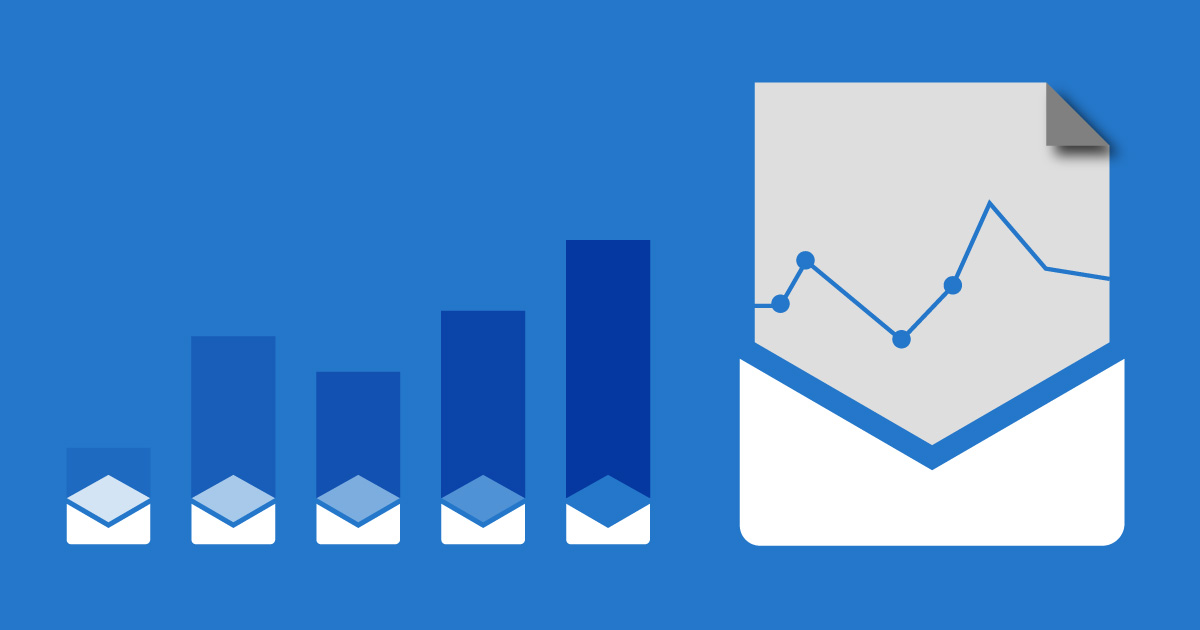Email marketing appears to be one of the most underrated forms of marketing. People think with the advent of communication tools and social platforms, inboxes have lost their attraction. Now every email one receives from a stranger is either spam or a solicitation call.
The truth, however, is that half of the entire globe still depends on emails and a vast majority of these people check their inboxes daily. That’s quite a lot of potential to tap!
On the surface of things, it is fairly obvious that emails are more targeted than any other medium of promotion. It’s customized, one-on-one, and more personalized. You may wonder that “my CTR (click-through rate) isn’t good enough to justify the efforts and time I’m putting into this campaign.”
What you need is a parallel analysis: what percent of, let’s say, your social media content is getting you clicks? How much human effort and investment do you put into other forms of marketing and what results are they generating for your business? In the same vein, which is more difficult and costly: to set up and manage an email campaign or one you would run within, let’s say, Google Ads
Anyone who knows digital marketing knows that email marketing isn’t costly nor is it that difficult to give you a headache. It’s easier, less costly, and more targeted than most other forms of paid and organic marketing.
Nevertheless, there are a few things you need to learn first. Just as you have to know the basics of how other forms of marketing work to drive results, you need to know a few key metrics that are responsible for your email campaign’s success.
Let’s talk about them below.
Clickthrough Rate (CTR)
The commonest of all metrics in any email marketing campaign. If you’re not paying attention to it, chances are that you’re not doing it the right way.
In simple terms, the click-through rate is the percentage of people who open your email and click on something within the email content — a link, an image, an attachment, an embedded video, etc.
If you want a formula, here it is:
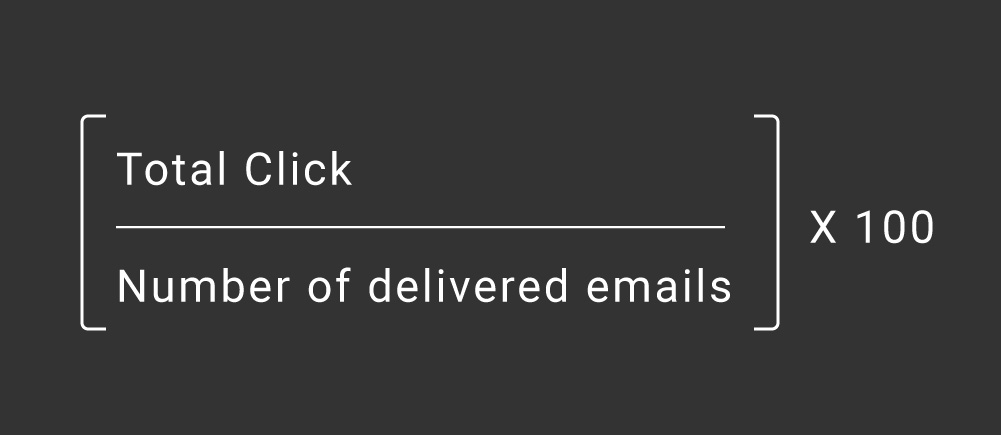
The higher the click-through rate, the better. And the lower the CTR, the more concerned you should be. Why? Because you want people to take meaningful actions and not just click “open” and click “close”.
Keep in mind though that there are no set-in-stone benchmarks. Depending on the audience’s interest, the CTR for some industries could be high and, for others, it could below.
If you’re using an email marketing tool like Mailchimp, it tells you quite a bit of information around every important metric, including the CTR metric itself.
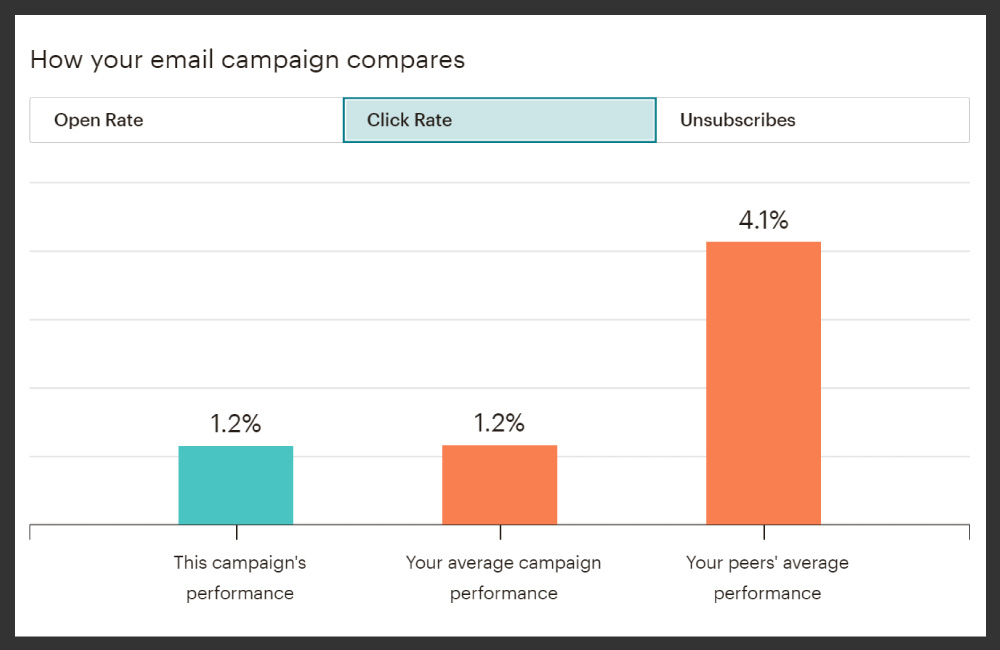
Look at how your campaign is performing compared to those of your competitors. If the CTR is below the industry average, something has to be wrong with the way you craft your email message.
Getting your email audience clicked on a call-to-action within the email body is a craft worth your time and attention. If a certain email template isn’t working, maybe you should try modifying it. Better yet, you may come up with a set of different email templates and let them all run simultaneously. You will have an idea of why certain emails are performing better than others and what areas you need to work on to improve the CRT.
In short, test, test, and test. There isn’t a quicker and better alternative.
Conversion Rate
Don’t confuse it with the click-through rate discussed above. Your conversions are the number of people who have opened your email and took an action that you consider a conversion goal.
It could be any goal that ties to your overall marketing objectives. For example, someone downloading a file you attach in the email could be your conversion action. Or you may consider people clicking a link that directs them to a certain landing page as your conversion action. The calls to action (CTA) you put in the body of your marketing emails are what will lead to conversions, so you need to craft them carefully.
Here’s a simple formula for conversion rate:
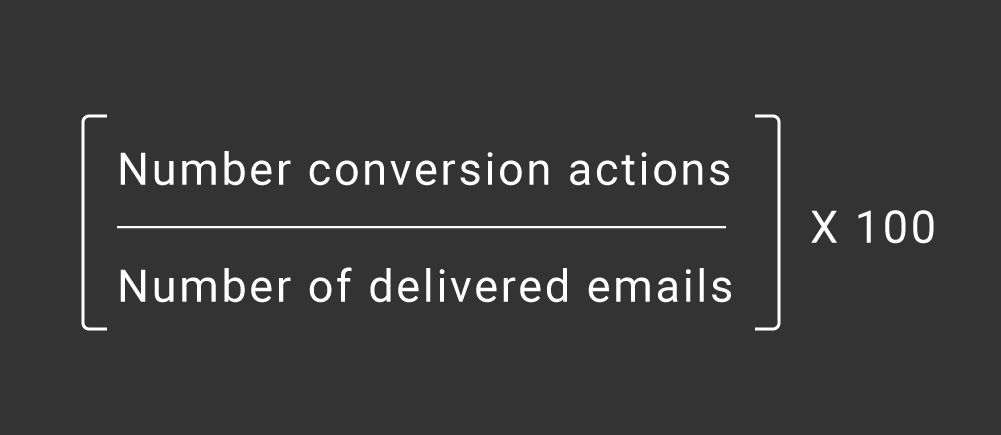
To track conversions more effectively, there’s a little process involved. If you’re not conversant with trackings and analytics, it’s a good idea to find someone who is. To properly track your email conversions, you’ll need to integrate your analytics tool (Google analytics in most cases) with the email platform you’re using. This Hubspot guide here is going to help you execute the process in a seamless way.
Bounce Rate
As a sender of mass emails, you’ll have to maintain a soft reputation. Your emails travel in a system that is monitored and controlled. The ISPs and hosting providers, for example, come in between you and the audience you want to email. If they notice that the bounce rate for your emails is unusually high, they may downgrade your reputation, stopping your emails from going through or sending them to spam folders.
So what’s the bounce rate? It’s the percentage of your emails that couldn’t make it to the recipients’ inboxes.
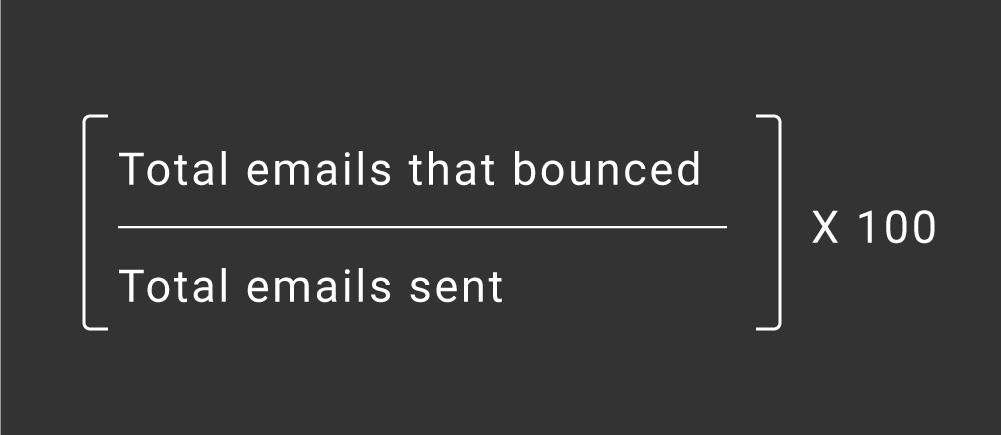
Bounces are of two types: soft bounces that occur when there’s a temporary issue on the recipient’s end. For example, their inboxes are full or there’s a temporary problem with the email server. In either case, these emails are valid and will receive the message sooner or later.
The second type is hard bounces. These bounces happen when there are invalid, closed, or non-existent emails. You need to be vigilant about them as they will cause real problems. When you find that your bounce rate is high because there’s a bunch of invalid emails in the list, it’s time to root them out.
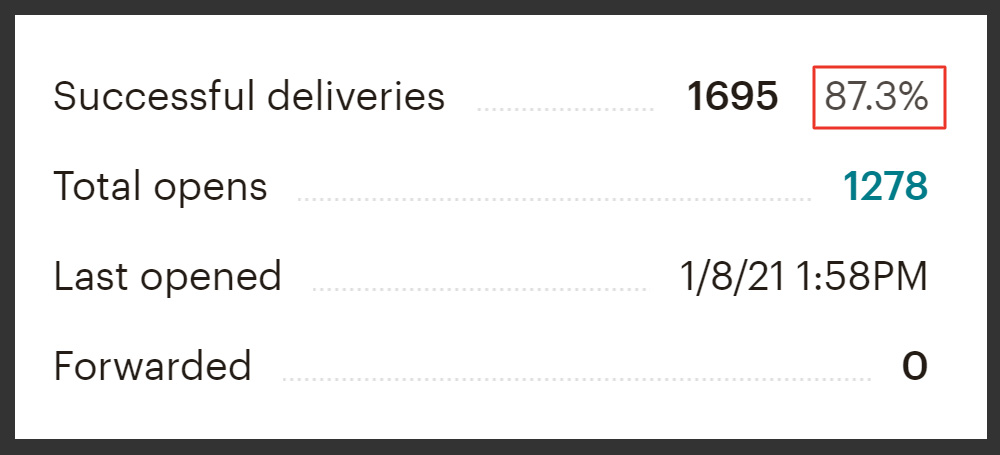
Open Rate
The open rate is the percentage of recipients who open your email. A higher open rate means more people are seeing the message which is a good thing, especially when it positively correlates with your click-through rate.
Two things you need to keep in mind: First, the open rate may not be a true representation of the actual percentage of people who open your email. That’s because most of the time your email client won’t consider an email as “viewed” unless the recipient also opens the image(s) that come(s) with the original email. And it’s very normal for most users to preconfigure their email settings so as to block any images embedded in the message. This may result in your email client showing you a lower open rate, but the actual rate could be much higher.
Second, the open rate isn’t directly tied to your end goals. You may be tempted to use clickbaity, hyper-sensationalized subject lines just to improve your open rate, but will that also positively affect your CTR and bounce rate. It won’t. In fact, if your subject is misleading, it’ll cause more problems than the benefit you in any way.
So your primary focus should be on improving the email content itself and what you can do to trigger the recipient into taking actions that are closely tied to your email marketing goals.
Unsubscribe Rate
It’s the percentage of people who opt out of your list after opening your email. You can’t control that, nor should you be very concerned about this metric. You may consider making your email content as effective, relevant, and actionable as possible, but you can’t force a subscriber to continue viewing your email.
Looked at from another perspective, it’s actually good for your email campaign. You want people who engage with your content and the value you have to offer. It’s likely that a certain percentage of people in your email list will always be irrelevant and disinterested in what you have to offer. They are not your primary focus and, if you could, you should identify and exclude them from the list (if they choose to stay).
The unsubscribe rate gives you a general idea of whether your emails are well received or unappreciated. As such it’s not a metric worth dwelling on. The metrics that should occupy most of your attention are the click-through rate (CTR) and conversion rate. If these two give you a positive signal, you’re on the right track and your future course of action should be to build on the progress.
Email marketing is important and you can always depend on it to supplement other forms of digital marketing you deem fit for your business. With email marketing metrics, the idea is simple: you should neither miss out on the key metrics I discussed above nor get confused in the maze of other metrics that are less relevant to your end goals.
 +1-713-701-5823
+1-713-701-5823 +92-518-441-742
+92-518-441-742